Auctions
From an Outperforming Algorithm to Dakar’s Overnight Art Star, Here Are the 8 Biggest Auction Surprises of 2018
We look back at the year in auctions.
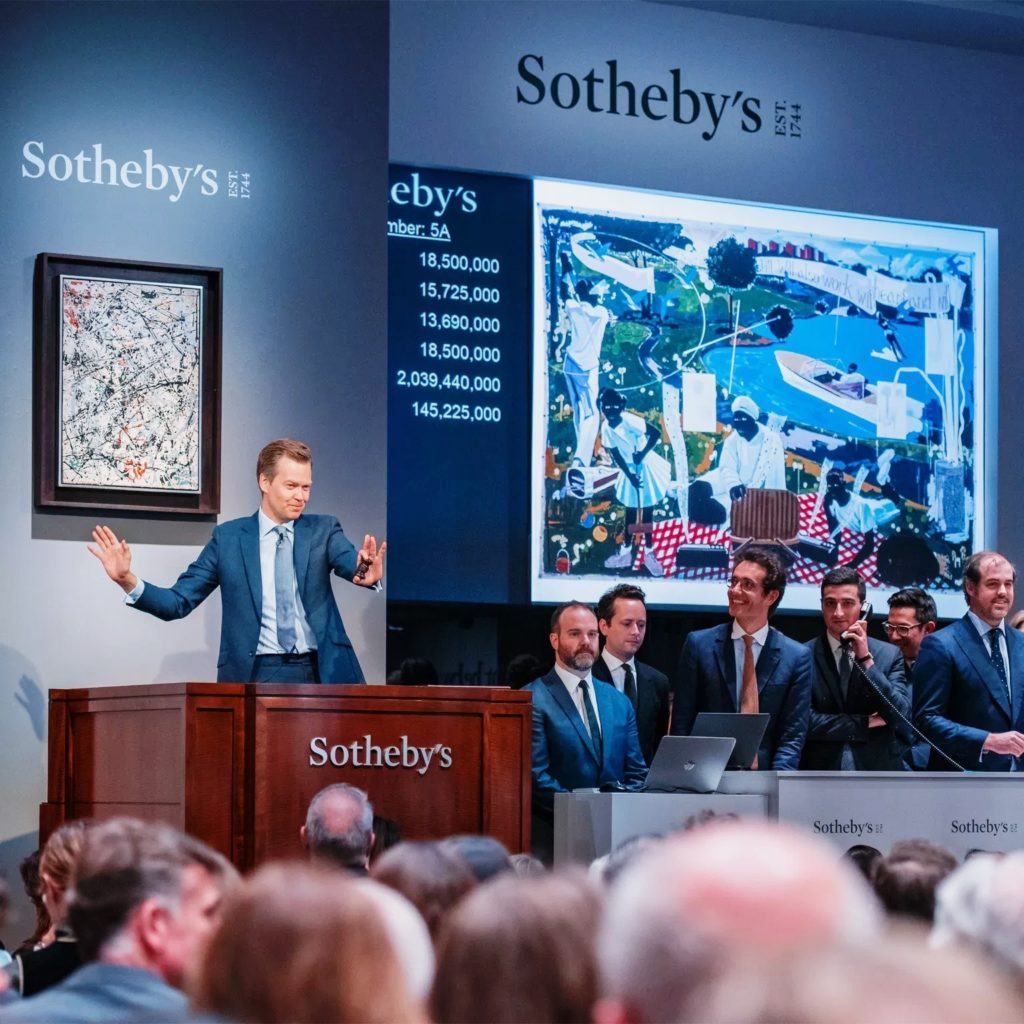
We look back at the year in auctions.

Colin Gleadell

Auction sales this year may not have reached the dizzying heights of the last art-market boom four years ago, but there was still plenty of drama, unexpected twists, and unlikely successes. Below, we break down the seven most surprising auction sales of the year. (Yes, that shredded artwork makes the cut.)
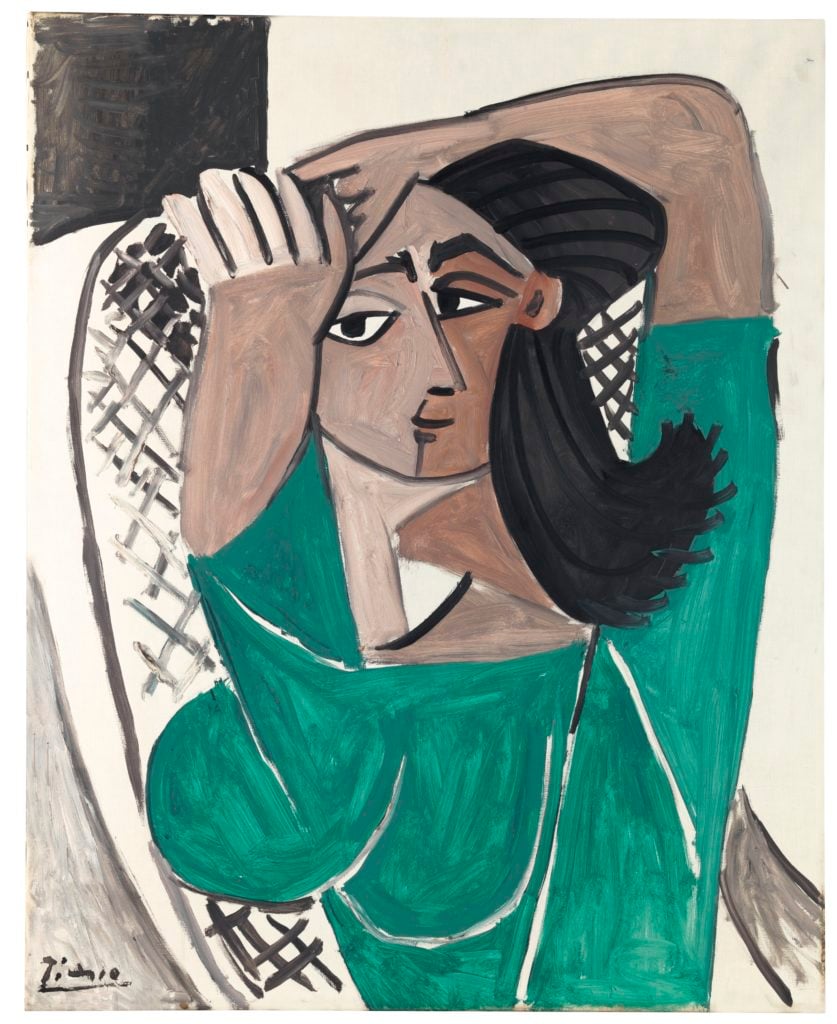
Pablo Picasso, Femme se coiffant (1956). Courtesy of Christie’s Images Ltd, 2018.
London’s Impressionist sales in February were, as usual, stacked high with Picassos from all dates, in all mediums, and varying in quality. Christie’s had 13; so far, so predictable. So imagine their surprise when they not only sold them all—but to the same person. The bill came to £112.5 million ($142 million). The other element of the surprise was that the agent for the buyer—Harry Smith of Gurr Johns art advisors—made no attempt to disguise his bidding. Although he would not be drawn on who he was buying the Picassos for, Smith did discuss the artist as a good investment at the time “because he is modern; he is a widely recognized brand; and the supply of his work is plentiful.” Good advertising for the company, you may say, but some specialist observers were a bit sniffy about the lack of consistent quality in the 13 works. The best clue about the identity of the buyer was the fact Smith’s companion at one of the sales was his Middle East consultant, Diane Abela, though—to make matters more mysterious—some of the subjects of the paintings would not have been deemed respectable in Islamic society.
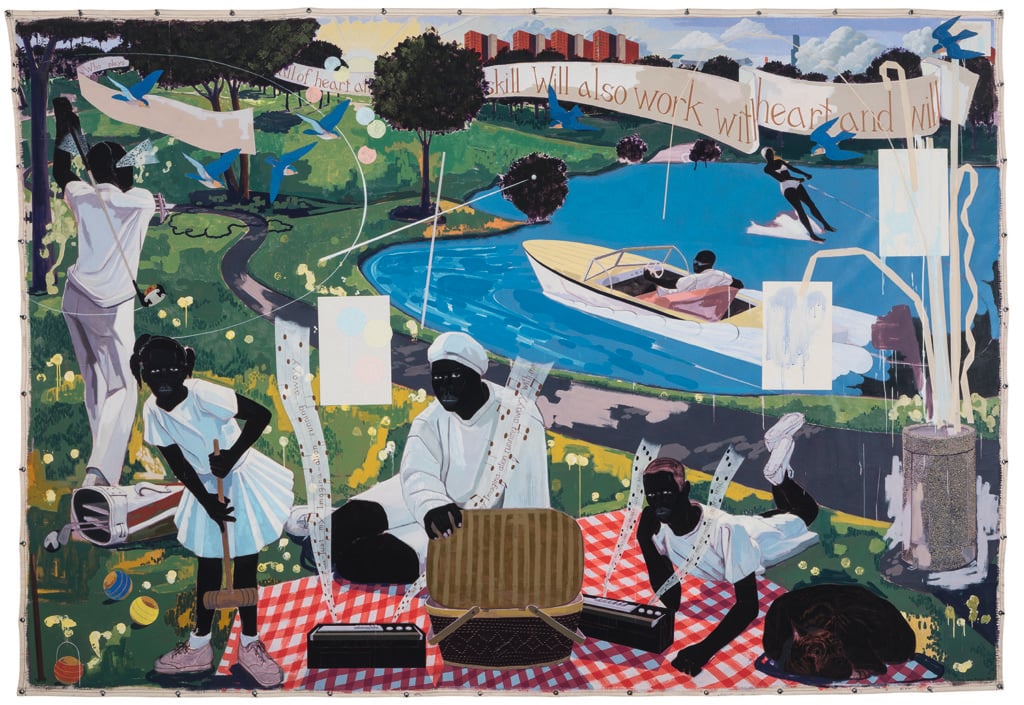
Kerry James Marshall, Past Times (1997). Courtesy of Sotheby’s.
That Kerry James Marshall’s Past Times (1997) broke the artist’s record at Sotheby’s in May was not a surprise. The artist’s prices had been on the up for a decade and passed the million dollar mark in 2016. The estimate of $8 million to $12 million for Past Times was already double his previous record. But it was the extent by which it broke the record, selling for $21.1 million, and who bought it—the music mogul Sean ‘Diddy’ Combs—that created the buzz.
The sale highlighted the wave of money, as well as gallery and collector interest, being directed to artists of color who have previously been overlooked by the mainstream auction market. Work by artists such as Jack Whitten, Frank Bowling, and Barkley L Hendricks, which was for years sold more frequently at much lower prices in Swann’s dedicated African American sales, attracted spirited bidding at Sotheby’s and Christie’s. In November, a stream of new records were set for 20th century African American artists, including Jacob Lawrence, Sam Gilliam, and Robert Colescott (to name only a few). The market heat is recent: 25 percent of the entire $2.2 billion total spent at auction on the work of African American artists was realized in the first six months of this year, according to an investigation by artnet News and In Other Words.

Paul Lucien Maze, Flowers in a Striped Vase (1974). Courtesy of Christie’s Images, Ltd.
Christie’s Rockefeller sales this spring produced a stream of high prices for low estimated lots—which shows how hard it is to put a value on provenance. For a British observer, and would-be bargain hunter, the least predictable performance must have been Lot 01636 online—a pastel of flowers by Paul Maze, the artist known as “the last British Impressionist.” A friend of Sir Winston Churchill and British royalty, he was collected by their American counterparts, and Peggy Rockefeller had quite a few—many of which were dedicated to her. Maze has long been out of the picture so far as the market is concerned, so the four figure-estimate on the flowers was more tempting than a surprise. But come the hour, those clicks kept on coming until the price hit $100,000—100 times its estimate. Strangely, the result seems to have had no effect on the Maze market back home.
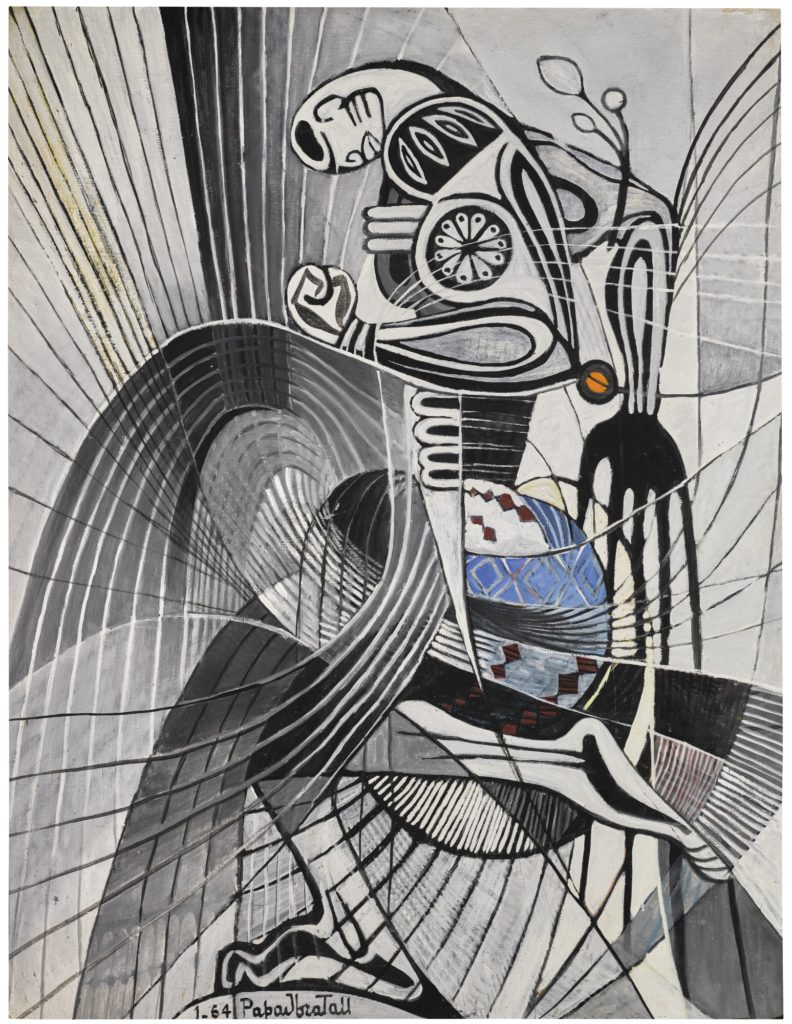
Papa Ibra Tall, The Warrior (1964). Courtesy of Sotheby’s.
For surprise results, look among the emerging markets. For connoisseurs of the art scene in Dakar, Senegalese artist Papa Ibra Tall, who studied design in Paris in the 1950s and became a leading figure in the decorative arts in his home country before dying in 2015, is a known quantity. But when Sotheby’s included one of his paintings in only its second sale devoted to contemporary art from Africa, they had little track record to go on in the secondary market apart from one textile that had sold in Paris in 2017 for €20,000 ($22,740) and another that was unsold earlier this year.
The Warrior is a Picasso-esque painting the artist made in 1964. A passionate jazz lover, he gave it to the pianist Duke Ellington at the first Festival Mondial des Arts Nègres in Dakar in 1966. Ellington died in 1974, and in 2016, Guernsey’s held an auction of his possessions owned by a relative at the Jazz Museum in Harlem; this painting fetched $6,000. At Sotheby’s in October, it was estimated at £8,000 ($10,119). It may have helped that the sale was timed to coincide with the Frieze Art Fairs and the 1:54 Contemporary African Art Fair staged in London that month, but in the event, the vibrant semi-abstracted painting left Sotheby’s experts agog as it sold for £118,200 ($157,000).
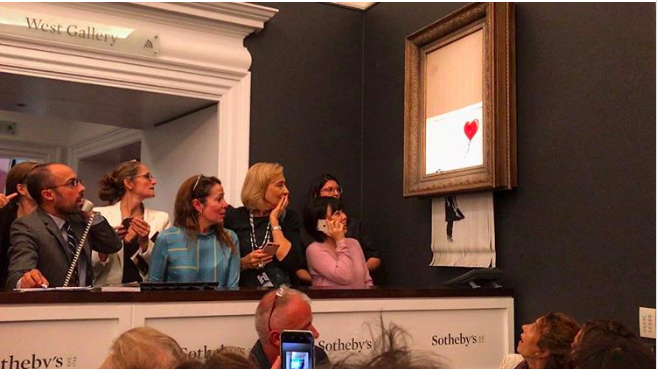
Surprised onlookers react as Banksy’s Girl With a Balloon self-destructs at Sotheby’s.
It would be hard to beat Banksy’s shredding of Girl with Balloon (2006) as a surprise performance during a high-profile Frieze week auction. We suspect auctioneer Oliver Barker knew something was going to happen as he took it in his stride so easily. But when the painting started spewing out of its frame in shreds and an alarm went off, the whole room, and shortly the whole world, was taken aback. Afterwards, via Instagram, the artist revealed the degree of planning that went into that surprise—from the specially modified frame, the restrictions on inspecting the painting beforehand outside the frame, to the placing of the picture not just at the end of a sale where it would be least disruptive, but somewhere in full view of the audience. It is not known whether the buyer knew what would happen or how much they would have to bid, but after paying a record $1.4 million for a one-off painting popularized by hundreds of printed versions, they could have rescinded the sale as the painting had been damaged. Or had its value been enhanced? Either way, it has been officially re-authenticated as a new work by Banksy and renamed Love is in the Bin (2018). It is now on record as the most expensive solo work sold by Banksy at auction. But I can’t help feeling there are more surprises in store as far as this work is concerned.
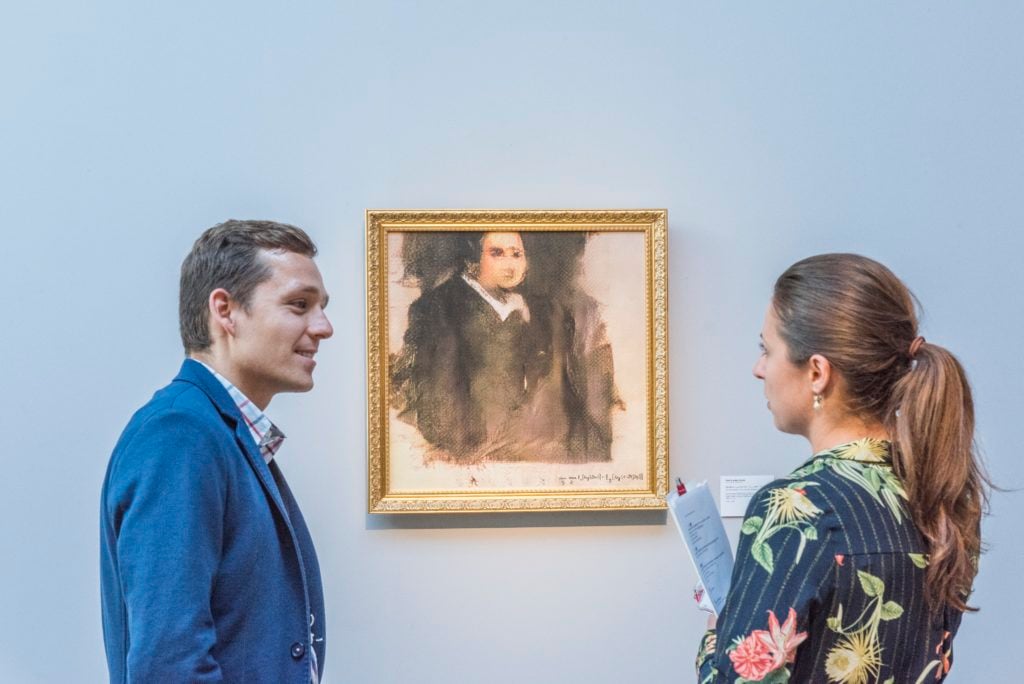
Obvious Art’s ??? ? ??? ? ?? [??? ? (?))] + ?? [???(? − ?(?(?)))], Portrait of Edmond de Belamy, Generative Adversarial Network print on canvas (2018).
I lost count of how many derisory posts were made on social media, but typical was the art historian Bendor Grosvenor who described as: “a woeful blancmange of a painting,” and implied that the price must have been rigged. The one thing everyone was agreed on was that the buyer was not an art lover, but a speculator who believes AI has a real future in the art market.

David Hockney, Portrait of an Artist (Pool with Two Figures) (1972). Courtesy of Christie’s Images Ltd.
Until recently, the market would have sniffed at the idea that David Hockney could become the world’s most expensive living artist at auction. That is, until this fall, when word got out that British collector, Joseph Lewis, was looking for $80 million for his Portrait of an Artist (Pool with Two Figures). Compounding the surprise figure was the news that Christie’s would sell it without reserve. It is the norm that most art at auction has a reserve minimum—and at the top end, increasingly, a guarantee. One doesn’t know exactly what Lewis’s financial arrangements were, but neither of these two norms applied. The fact that bidding stopped exactly at $80 million ($90.2 million with buyer’s premium) did smack of something pre-arranged, or at least anti-climactic, but that should not distract from the risk undertaken that, in theory, it could have sold for much less.

Andreas Farkas, Modiano (ca. 1930). Courtesy of Christie’s.
Provenance must surely have had something to do with the most extraordinary result from Christie’s sale of the contents of Annabel’s nightclub in London—which had been home, since the 1950s, to all manner of celebrities from Elizabeth Taylor to Frank Sinatra and Mick Jagger to Kate Moss, not to mention well-heeled art dealers and collectors. The walls were decked with artworks. But it was, surprisingly, some of the ones by lesser-known artists that performed best at auction. Take a 1930s art deco cigarette advertising lithograph for Modiano by the Hungarian designer Andreas Farkas. Estimated at just £1,000 ($1265), it sold for £193,750 ($244,898).
Richard Barclay, a specialist dealer in France who started Christie’s poster department in 1982, told artnet News that Farkas belonged to a school of designers that influenced the Bauhaus. Good examples of his work had sold previously for up to £37,500 ($47,400)—so the estimate at Annabel’s was uninformed. Add to that that it was extremely rare—Barclay had never seen a copy of this poster before—and the exclusive provenance, and you have the basis for an interesting contest between must-have bidders.